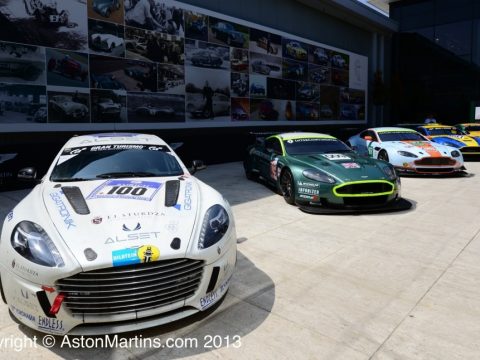The engine is capable of running on just petrol, just gaseous hydrogen, or a blend of both and demonstrates the companies commitment to engineering innovation. In pure hydrogen mode, Aston Martin and Alset Global aim to show that a zero CO2 emissions lap of the Nordschleife is possible while emitting virtually only water from the exhaust.
The Hybrid Hydrogen system, approved by German motorsport’s governing body, the DMSB, comprises a hydrogen fuel rail, storage tanks and proprietary engine management system. The critically important four storage tanks are made from ultra-high strength carbon fibre and hold a total of 3.5kg of hydrogen stored at a pressure of 350bar. Two tanks housed next to the driver and two in the boot of the car. The engine management enables flexibility in the control of the combustion process according to ensure optimum power, acceleration and CO2 reduction. The Hybrid Hydrogen Rapide S may have true sports car performance but also has only the carbon footprint of a Cygnet.
Rumours during 2015 were that Aston Martin are working on an all electric Rapide for launch before the end of 2017. With the standard V12 removed, there would be plenty of space under the bonnet for all the batteries and such a system could, in theory deliver 1000 bhp and a range of 200 miles.
The photographs of the Rapide were taken when the car was displayed, un-cleaned since the race at the Gaydon factory during Centenary week in July 2013.























